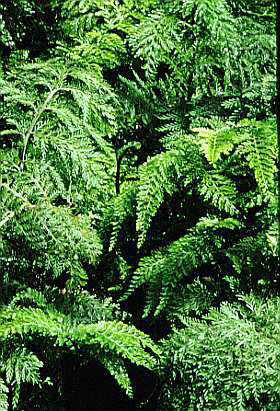Size
Ultimate height
0.5–1 metresTime to ultimate height
5–10 yearsUltimate spread
0.5–1 metresGrowing conditions
Moisture
Moist but well–drainedpH
Acid, NeutralColour & scent
| Stem | Flower | Foliage | Fruit | |
| Spring | Green | |||
|---|---|---|---|---|
| Summer | Green | |||
| Autumn | Green | |||
| Winter | Green |
Position
- Partial shade
Aspect
West–facing or East–facing
Exposure
Sheltered Hardiness
H2Botanical details
- Family
- Aspleniaceae
- Native to GB / Ireland
- No
- Foliage
- Evergreen
- Habit
- Tufted
- Genus
Asplenium are evergreen ferns with short, usually erect rhizomes bearing a rosette of slightly leathery fronds which may be simple, pinnate to 3-pinnate
- Name status
Correct
- Plant range
- Australia, New Zealand
How to grow
Cultivation
Grow indoors in bright indirect light, in a container using three parts peat-free multipurpose compost, one part peat-free John Innes No.3, and added horticultural grit, occasionally misting the fronds for moderate humidity. Water to keep the compost moist but not soggy and use a half strength general liquid fertiliser monthly between May and August. See how to grow ferns for further advice
Propagation
Propagate by sowing spores or by potting up plantlets when 3 or 4 leaves have formed
Suggested planting locations and garden types
- Patio and container plants
Pruning
Dead or damaged fronds may be removed as necessary
Pests
May be susceptible to scale insects
Diseases
Generally disease-free
Get involved
The Royal Horticultural Society is the UK’s leading gardening charity. We aim to enrich everyone’s life through plants, and make the UK a greener and more beautiful place.
